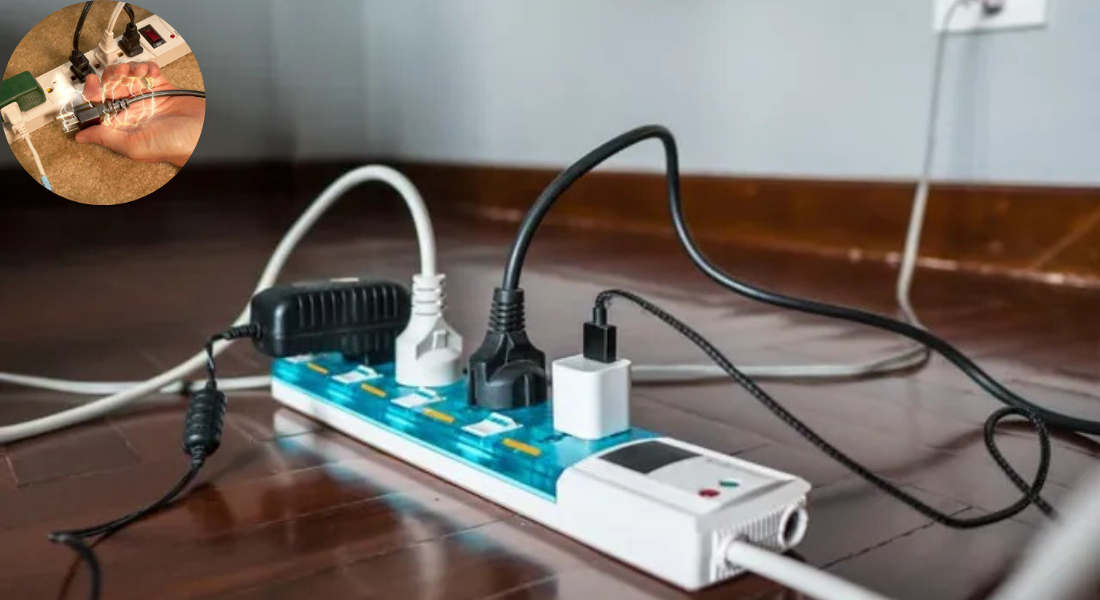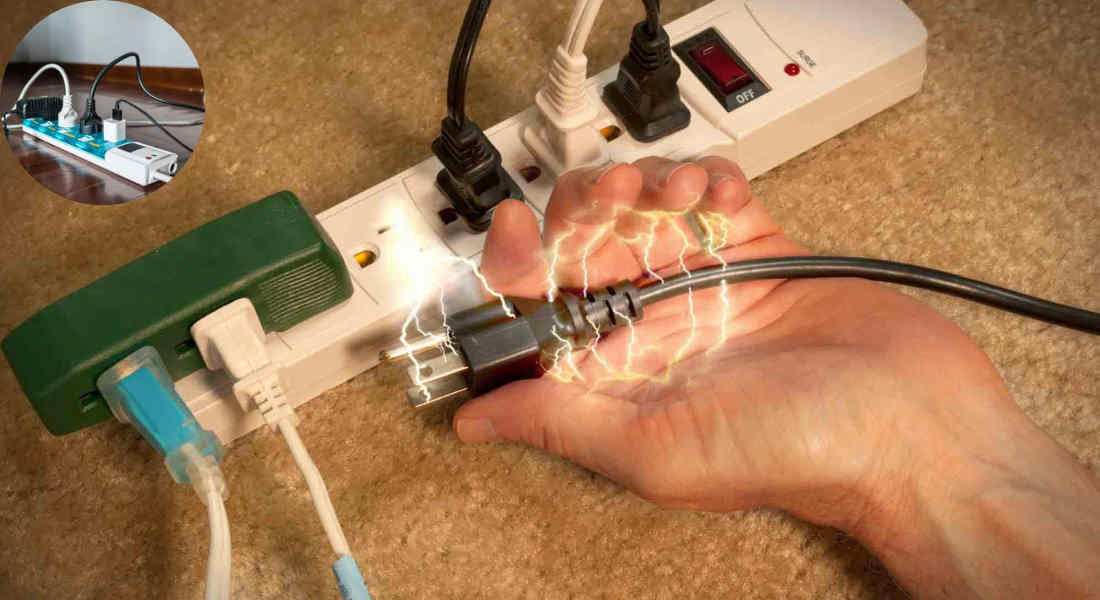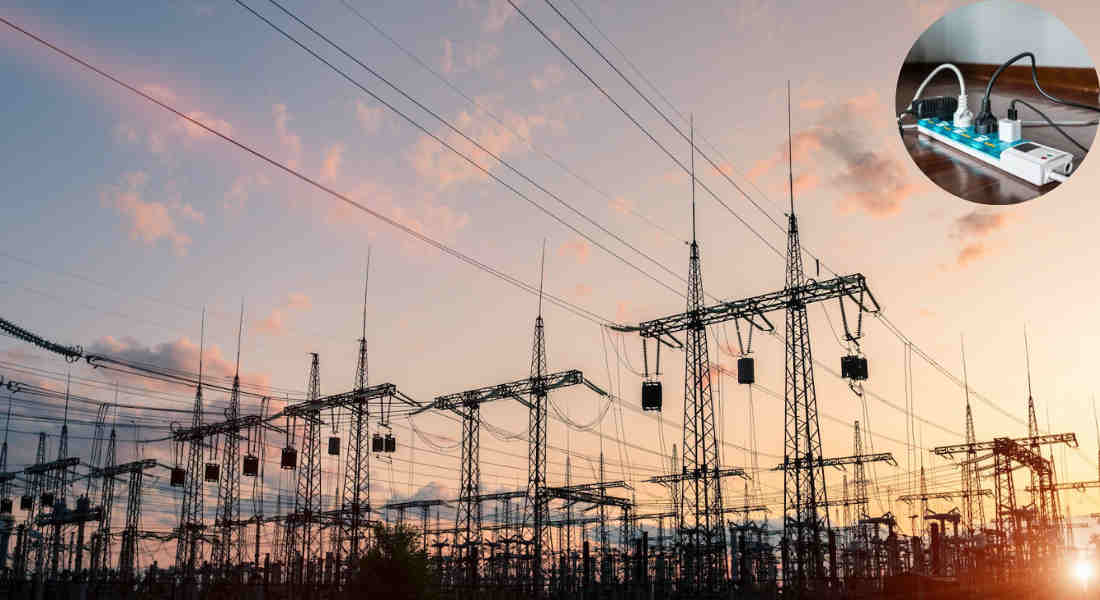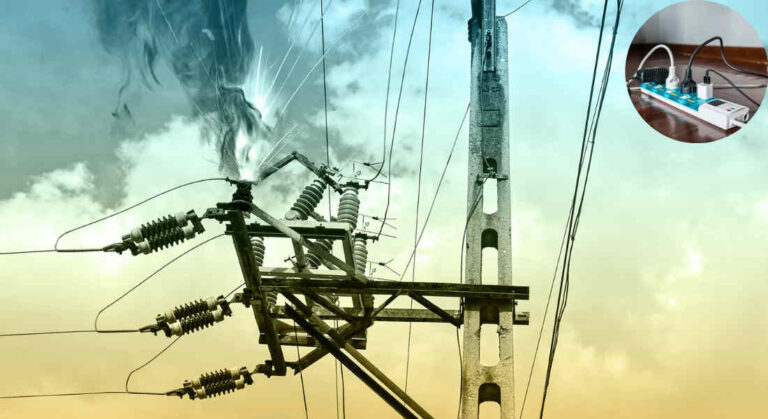Power surges are one of those mysterious electrical occurrences that many homeowners experience but don’t fully understand. Flickering lights, fried appliances, or even mysterious buzzing sounds—these are just some of the signs that your home might be experiencing power surges. But what causes them? Are they dangerous? And most importantly, how can you stop them?
What Is a Power Surge?
Before we can figure out why your house is experiencing power surges, it’s important to understand what a power surge is.
Definition of a Power Surge
A power surge refers to a sudden spike in the voltage flowing through your home’s electrical system. In most homes, the standard voltage is around 120 volts. When a surge occurs, the voltage briefly exceeds this level, sometimes spiking to thousands of volts. Even though this surge might last only a fraction of a second, the damage it can cause to your electrical devices and appliances can be significant.
How Power Surges Affect Your Home
Think of your home’s electrical system as a river, with electricity flowing smoothly like water. A power surge is like a sudden flood that overwhelms the riverbanks, causing damage to anything in its path.
When a surge occurs, it can:
- Overload circuits and damage sensitive electronics.
- Cause wires to overheat, leading to potential fire hazards.
- Shorten the lifespan of appliances by degrading internal components.
Why Should Homeowners Care About Power Surges?
Understanding power surges is critical because they can lead to:
- Costly repairs or replacements for damaged devices.
- Safety risks like electrical fires.
- Frustration from frequent electrical disruptions.
Why Is My House Power Surging?
If you’ve been asking, “Why is my house power surging?” you’re not alone. Power surges are a common problem that can stem from both internal and external factors. Let’s break down the most common causes.
You may also read (can i plug my caravan into house mains safely).
Electrical Overload
Overloading your home’s circuits is one of the leading causes of power surges. This happens when too many devices are plugged into the same outlet or extension cord, drawing more power than the circuit can handle.
Example Scenario:
Imagine plugging a space heater, a television, and a laptop charger into the same outlet using a power strip. When all these devices are running simultaneously, the circuit may become overloaded, leading to a surge.
Faulty or Damaged Wiring
Old or damaged wiring can also cause power surges. Exposed wires, worn insulation, or poor grounding can disrupt the flow of electricity, causing surges throughout your home.
Signs of Faulty Wiring:
- Flickering lights
- Frequent tripped breakers
- Burning smells near outlets
Lightning Strikes
While rare, lightning strikes can cause massive power surges. When lightning strikes near your home or directly hit the power lines, the resulting surge can send thousands of volts surging through your electrical system.
Did You Know?
A lightning-induced power surge can completely destroy unprotected appliances in seconds.
Power Outages and Restoration
When power is restored after an outage, the sudden influx of electricity can cause a surge. This is because the electrical flow returns all at once, overwhelming your home’s circuits.
Tripped Circuit Breakers
If your circuit breaker is damaged or malfunctioning, it may fail to regulate electrical flow properly. This can result in frequent surges, especially when high-power devices are in use.
Utility Company Issues
Sometimes, the issue isn’t in your home at all. Problems with the local electrical grid, such as maintenance work, accidents, or equipment failures, can send surges through your home’s wiring.
Signs That Your House Is Experiencing Power Surges
How can you tell if your house is experiencing power surges? Here are some common signs to watch for:
You may also read (navigating house purchases keeping your council home).
- Flickering or dimming lights: Sudden changes in the brightness of your lights are often a sign of voltage irregularities.
- Appliances shutting off unexpectedly: If your devices frequently stop working for no apparent reason, a power surge may be to blame.
- Frequent tripping of circuit breakers: This could indicate that your electrical system is struggling to handle surges.
- Buzzing sounds or burning smells: These are serious warning signs of electrical issues caused by surges.
- Damaged electronics: If your devices seem to fail more often than usual, they may be suffering from surge-related damage.
Risks and Consequences of Power Surges
Power surges aren’t just inconvenient—they can also be dangerous. Here are some of the risks associated with surges:
Damage to Electronics and Appliances
Surges can fry internal circuits, rendering expensive devices like televisions, computers, and refrigerators useless. The financial burden of replacing these items can quickly add up.
Fire Hazards
Overheated wires caused by surges can ignite, increasing the risk of electrical fires.
Reduced Lifespan of Devices
Repetitive surges, even minor ones, can slowly degrade the performance of your electronics, shortening their lifespan.
Data Loss
For computers and smart devices, surges can cause data corruption or loss, leading to frustration and lost productivity.
Safety Risks
Surges can create sparks or shocks that pose a direct risk to you and your family.
How to Stop Power Surges: Prevention and Protection
Now that you know the causes and risks, let’s explore how to stop power surges.
Immediate Actions
- Unplug devices during storms: This prevents damage from lightning-induced surges.
- Avoid overloading outlets: Distribute your devices across multiple outlets to reduce the risk of overload.
Install Surge Protection Devices
- Whole-house surge protectors: These are installed at your main electrical panel and protect your home from external surges.
- Point-of-use surge protectors: These plug into individual outlets and safeguard specific devices.
Type of Surge Protector Purpose Cost Range
Whole-House Protector Protects the entire home $200-$500 + install
Point-of-Use Protector Protects individual devices $20-$100 per unit
Electrical System Maintenance
- Regularly inspect your wiring for damage.
- Upgrade old circuit breakers to modern, surge-resistant models.
- Consult a licensed electrician for a professional evaluation.
Best Practices for Electrical Usage
- Distribute the electrical load evenly: Spread out high-power devices across circuits.
- Avoid daisy-chaining extension cords: This reduces the risk of overload.
- Use appliances within their amperage ratings: Check the manual for recommended limits.
Prepare for External Surges
- Install lightning protection systems to redirect strikes safely.
- Work with your utility company to address grid-related issues.
When to Call a Professional Electrician
Some power surge issues require professional help. Here’s when to call an electrician:
- Persistent surges despite using surge protectors.
- Signs of damaged or outdated wiring.
- Frequent breaker trips that don’t resolve with basic fixes.
Professional electricians can diagnose the root cause and recommend long-term solutions to keep your home safe and secure.
You may also read (home to get hot at night).

